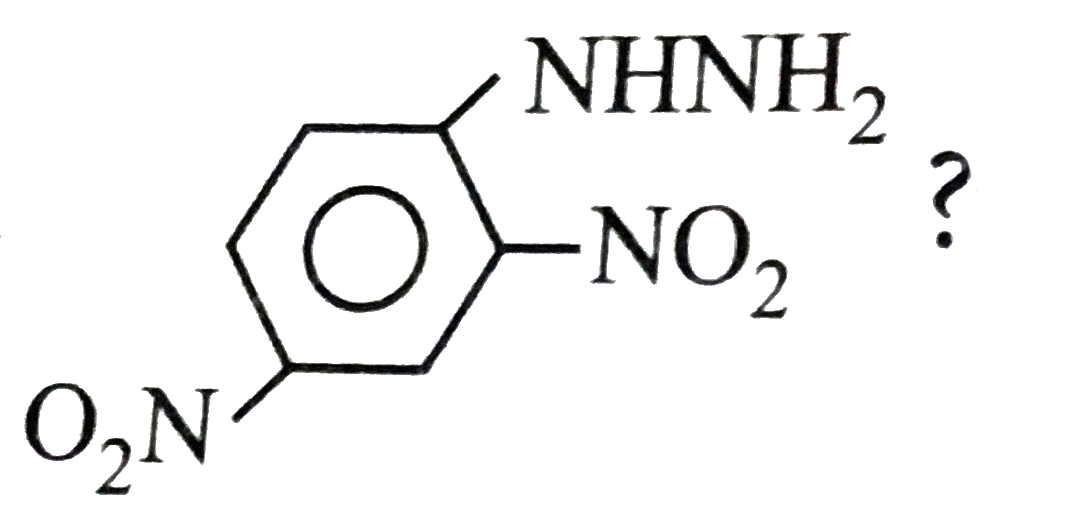Generally transition elements form coloured salts due to the presence of unpaired electrons. Which of the following compounds will be coloured in the solid state ?
Ag2SO4
CuF2
ZnF2
Cu2Cl2
The correct Answer is:B
To determine which of the given compounds will be colored in the solid state, we need to analyze the electronic configurations of the transition metals present in each compound and check for the presence of unpaired electrons. Compounds with unpaired electrons typically exhibit color due to d-d transitions.
1. Identify the Compounds and Their Transition Metals:
- The compounds to analyze are:
- AgSO4
- CuF2
- ZnF2
- Cu2Cl2
2. Analyze AgSO4 (Silver Sulfate):
- Silver (Ag) in AgSO4 exists as Ag⁺.
- The electronic configuration of Ag is:
Ag: (Kr) 4d105s1
- When Ag loses one electron to become Ag⁺, it loses the 5s electron:
Ag+:(Kr)4d10
- The d-orbital is fully filled (10 electrons), which means all electrons are paired.
- Conclusion: AgSO4 is colorless (diamagnetic).
3. Analyze CuF2 (Copper(II) Fluoride):
- Copper (Cu) in CuF2 exists as Cu²⁺.
- The electronic configuration of Cu is:
Cu: (Ar) 3d104s1
- For Cu²⁺, it loses two electrons (one from 4s and one from 3d):
Cu2+:(Ar)3d9
- There is one unpaired electron in the 3d subshell.
- Conclusion: CuF2 is colored due to the presence of unpaired electrons.
4. Analyze ZnF2 (Zinc Fluoride):
- Zinc (Zn) in ZnF2 exists as Zn²⁺.
- The electronic configuration of Zn is:
Zn: (Ar) 3d104s2
- For Zn²⁺, it loses two electrons from the 4s subshell:
Zn2+:(Ar)3d10
- The d-orbital is fully filled (10 electrons), meaning all electrons are paired.
- Conclusion: ZnF2 is colorless (diamagnetic).
5. Analyze Cu2Cl2 (Copper(I) Chloride):
- Copper (Cu) in Cu2Cl2 exists as Cu⁺.
- The electronic configuration of Cu is:
Cu: (Ar) 3d104s1
- For Cu⁺, it loses one electron (from 4s):
Cu+:(Ar)3d10
- The d-orbital is fully filled (10 electrons), meaning all electrons are paired.
- Conclusion: Cu2Cl2 is colorless (diamagnetic).
Final Conclusion:
Among the compounds analyzed, only CuF2 is colored in the solid state due to the presence of unpaired electrons in the Cu²⁺ ion.
- The compounds to analyze are:
- AgSO4
- CuF2
- ZnF2
- Cu2Cl2
- Silver (Ag) in AgSO4 exists as Ag⁺.
- The electronic configuration of Ag is:
Ag: (Kr) 4d105s1
- When Ag loses one electron to become Ag⁺, it loses the 5s electron:
Ag+:(Kr)4d10
- The d-orbital is fully filled (10 electrons), which means all electrons are paired.
- Conclusion: AgSO4 is colorless (diamagnetic).
- Copper (Cu) in CuF2 exists as Cu²⁺.
- The electronic configuration of Cu is:
Cu: (Ar) 3d104s1
- For Cu²⁺, it loses two electrons (one from 4s and one from 3d):
Cu2+:(Ar)3d9
- There is one unpaired electron in the 3d subshell.
- Conclusion: CuF2 is colored due to the presence of unpaired electrons.
- Zinc (Zn) in ZnF2 exists as Zn²⁺.
- The electronic configuration of Zn is:
Zn: (Ar) 3d104s2
- For Zn²⁺, it loses two electrons from the 4s subshell:
Zn2+:(Ar)3d10
- The d-orbital is fully filled (10 electrons), meaning all electrons are paired.
- Conclusion: ZnF2 is colorless (diamagnetic).
- Copper (Cu) in Cu2Cl2 exists as Cu⁺.
- The electronic configuration of Cu is:
Cu: (Ar) 3d104s1
- For Cu⁺, it loses one electron (from 4s):
Cu+:(Ar)3d10
- The d-orbital is fully filled (10 electrons), meaning all electrons are paired.
- Conclusion: Cu2Cl2 is colorless (diamagnetic).
Among the compounds analyzed, only CuF2 is colored in the solid state due to the presence of unpaired electrons in the Cu²⁺ ion.
Topper's Solved these Questions
- d- AND- f- BLOCK ELEMENTSBOOK - ICSECHAPTER - d- AND- f- BLOCK ELEMENTSEXERCISE - EXERCISE (PART-I)(CORRECT THE FOLLOWING STATEMENTS BY CHANGING THE UNDERLINE PART OF THE SENTENCE : )
15 Videos
- d- AND- f- BLOCK ELEMENTSBOOK - ICSECHAPTER - d- AND- f- BLOCK ELEMENTSEXERCISE - EXERCISE (PART-I)(MATCH AND FOLLOWINGS):
1 Video
- d- AND- f- BLOCK ELEMENTSBOOK - ICSECHAPTER - d- AND- f- BLOCK ELEMENTSEXERCISE - ISC EXAMINATION QUESTIONS (PART-II)(DESCRIPTIVE QUESTIONS)
15 Videos
- COORDINATION COMPOUNDS BOOK - ICSECHAPTER - COORDINATION COMPOUNDS EXERCISE - ISC EXAMINATION QUESTION (PART- II DESCRIPTIVE QUESTIONS)
39 Videos
- DISTINCTION BETWEEN PAIRS OF COMPOUNDS BOOK - ICSECHAPTER - DISTINCTION BETWEEN PAIRS OF COMPOUNDS EXERCISE - QUESTIONS
155 Videos
Similar Questions
Knowledge Check
Generally transition elements form coloured salts due to the presence of unpaired electrons. Which of the following compounds will be coloured in the solid state ?
AAg2SO4BCuF2CZnF2DCuCl2Which of the following compounds is not coloured ?
A1. Na[CuCl4]B2. Na2[CdCl4]C3. K4[Fe(CN)]6D4. K3[Fe(CN)6]
Which of the following compounds is not yellow coloured ?
View SolutionGenerally transition elements and their salts are coloured due to the presence of unpaired electrons in metal ions. Which of the following compounds are coloured?
View SolutionWhich of the following compounds will give a coloured crystalline compound with
 ?
?
View SolutionWhich of the following compounds is expected to be coloured?
View SolutionWhich of the following compounds give colour due to charge transfer?
View SolutionWhich of the following compound are coloured due to charge transfer spectra ?
View Solution
